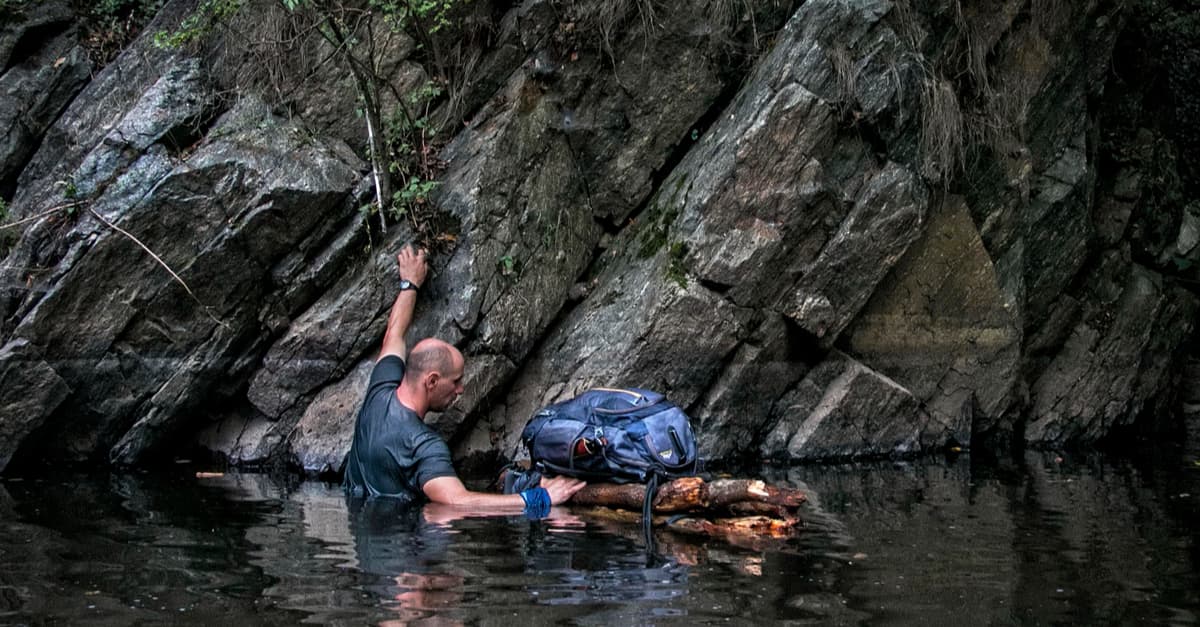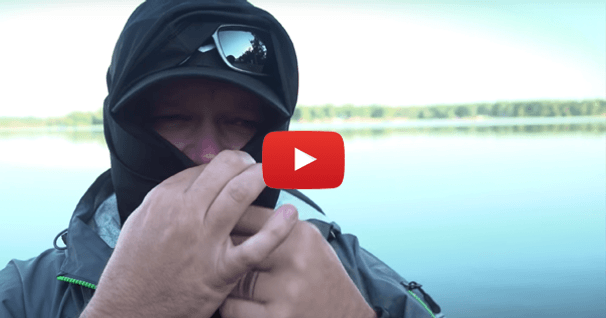Survival Sense for Paddlers

One day, it's bound to happen: your attempted beach landing in the surf fails and your boat is swept away while the waves dump you onto a beach; or that incoming tide was a bit higher -and faster -than you thought and now you are stranded on a remote beach. Whatever the scenario, survival situations create a great deal of anxiety in victims. For paddlers, prone to explore beyond the nearby headland or back along out-of-the-way beachheads, the reality of being put into a survival situation should be a real concern.
Most prudent paddlers are prepared do take recovery actions after an unexpected capsize, but as a paddler - seasoned or novice - how prepared are you to deal with the situation if you lose your boat? How competent are you to survive a night in the maritime environment without a tent, sleeping bag or even food and water? Could you survive the elements? Would you know what to do and when or how to perform the right tasks to survive such an ordeal?
Members of the U.S. Coast Guard and Alaska's commercial fishing fleet share in these concerns on a much greater scale. In response to those concerns, the Alaska Maritime Safety Institute developed the Seven Steps to Survival to be taught to those whose livelihood was the sea. Taking those seven steps - a sequential checklist of what do in a survival situation - and modifying them for use in the paddling community, I developed the seven steps into the "survival sense" list for fellow paddlers that has been shared at various regional sea kayak symposia for the past ten years.
The Seven Steps to Being a Survivor
Like a pilot's checklist, the seven steps on the survival sense list are meant to be followed in the sequence presented. They are meant to minimize the already anxious environment of a survivor situation and provide a routine to follow to offer everyone the best chances at being a survivor.
The rationale behind each and a few tips for each step:
1. KNOW you are in a critical situation
The first step is to realize the need to activate the seven steps. This may seem obvious - your boat is lost, you're sitting on the beach like drenched rats. It's OK to yell, cry, kick sand in the air, but get over it soon and start thinking positive, start acting like a survivor. Know you need to take command of the situation, realize you are in trouble and start the processes for being a survivor. You may be called upon to be in a position of leadership, these seven steps will help you help everyone in your party.
2. Take an INVENTORY of injuries
Check for any injuries to yourself and to those around you. Assess any cuts, scrapes, bruises or other types of injuries that might be hidden from immediate view (some tight-fitting outer clothing can prevent bleeding from being obvious at first inspection). Once this initial inventory of self and associates is taken - and dealt with - it's time to assess the surroundings. Will you have an adequate location to build shelters? Are there any natural hazards or situations present or upcoming (tides, unstable overhangs, etc.) that could create problems down the line? What resources are around you that can be used to collect water or building a shelter? It's important to make a mental note of resources available, don't dismiss anything during inventory. The shiny side of a broken pail can be used for digging or wetted and used for reflecting sunlight for signalling. Think like a survivor!
3. Find SHELTER
Shelter is perhaps the second most vital concern next to serious or life-threatening injuries. Hypothermia is the leading killer in such incidents. Headlines used to read "Died from Exposure". While that was the contributing cause, the reason for the death was usually a fatal loss of body warmth.
Anything that protects you from the elements and helps your body regulate those warming/cooling mechanisms is a shelter. It could be as simple as an outer shell of clothing or as elaborate as a small cave out or rough timbered lean-to.
4. SIGNAL for Help
Signalling for help is an eventual task you'll want to perform. Some argue that there is no need to signal right away because no one will know you are in peril. I argue that in some areas, routine or scheduled movement by air commuters or other commercial modes may be passing by and could respond to a signal that would stand out from the routine. Knowing that an intra-island ferry, for example, always passed by at a certain time, would encourage me to have signals ready.
The most important thing to remember about signals is that you want to create contrast, a visual (and sometimes audible) disturbance. It is very difficult to see signals from the air. To be effective, a ground sign must be at least three feet wide and 15 feet long. Three fires in a triangle (bright flame by night, dense smoke by day) is an international distress signal. Any bright piece of fabric works as a signalling device. Think of that the next time you are deciding upon which color of raincoat or dry bag you want to buy.
5. WATER is essential
Life's critical three's: you can live 3 minutes without air; 3 days without water and at least 3 weeks without food. If you do have food but no water, cut back on your eating. Your body needs water to perform its metabolic processes and foods containing protein require more water to digest than do other foods.
Water sources can be free-standing or flowing as found in lakes and streams or by collecting rainwater, either as it falls or by retrieving it from natural depressions. Water can even be collected by wiping the dew off of plant leaves, grasses, even that which forms on your gear - and then ringing that saturated cloth into a container and repeating the process. I collected over 250 ml (a cup) of morning dew in less than five minutes using just a bandana in a small patch of grass.
Most water will need to be purified before drinking. Keep a water filter, such as a Life Straw, in your emergency kit at all times. It is also important to drink lots of water - drink it if you have it (don't ration) and then go out and find more! It will pay off to learn basic water collecting skills and then practice them before you need to rely on those skills in a survival situation.
6. EAT / Food
Our bodies do need fuel. There are two things to remember about survival eating: Rule #1: If you don't know what it is, don't eat it! Rule #2 : Just because something is listed as "edible", doesn't mean it's going to taste good! Most of the Coast Guard personnel I know carry a bottle of Tabasco Sauce™ in their survival kit for this very reason.
There are several plants that offer satisfyingly edible, and good-tasting, parts. Most insects offer some food value. Coastal residents have a saying that if the tide is out, the table is set. It's a tribute to all the edible sea critters to be eaten. This is another skill that should be learned and practiced before being called upon in the field.
7. PLAY / Stay Positive
The very best survival tool a person has is right between one's ears! You will hear that keeping a Positive Mental Attitude (PMA) is the most important, critical survival tactic. Organizing games (who can collect the most edible plants, or the most signals). The idea behind this last step is to keep everyone as positive as possible, keep spirits up and many of the emotions that challenge any survival situation can be kept under control.
Just Remember: KISSWEP
Here's a handy acronym to help remember these seven steps: KISSWEP
- Know you are in trouble so you can start the seven steps process mentally and physically.
- Inventory assessment of injuries to self, others and inventory anything that might be useful for completing later steps.
- Shelter - protect yourself from the cold - or heat - to ward off hypothermia. IMPORTANT - shelter before fires! Get a warm, dry shelter first, then if it starts to rain while you are trying to light wood…you are warm and dry!
- Signal preparation means lots of contrast, bright colors, fire/smoke in sets. Anything out of the ordinary to catch someone's eye. Signal mirrors are very handy in daylight - no batteries! Have several forms of signals ready at all times.
- Water - to the point. It's critical; always have a means of collecting and purifying it.
- Eat - you'll want some food but you can go several weeks without it.
Play keep that PMA going!
Having a survival sense will prepare you for many conditions that could threaten your life. Learn skills and practice them ahead of time. Be prepared by anticipating situations and have the proper equipment (think multiple purpose for each item). Also, this list can be referred to over and over again as circumstances may change. Be safe, be a survivor.
Tom Watson is an avid sea kayaker with 15 years experience in the North Pacific waters of Kodiak Island, Alaska. He is also a freelance writer whose articles have appeared in most of the popular kayaking publications. He is a frequent presenter at regional kayak symposia. He is author of "How to Think Like A Survivor" (published in 2005) available on Amazon.com and most major bookstores.
Related Articles
We’ll take a look at the kit that I often choose to carry that I can access while afloat. This setup is…
Learn how to stay comfortable on the water when fishing in the cold. When you stay warm and…
Have you looked through an outdoor gear catalog recently? We are a highly specialized society – even…
I am a firm believer in the multiple utility of gear – getting the most out of each piece of equipment,…



